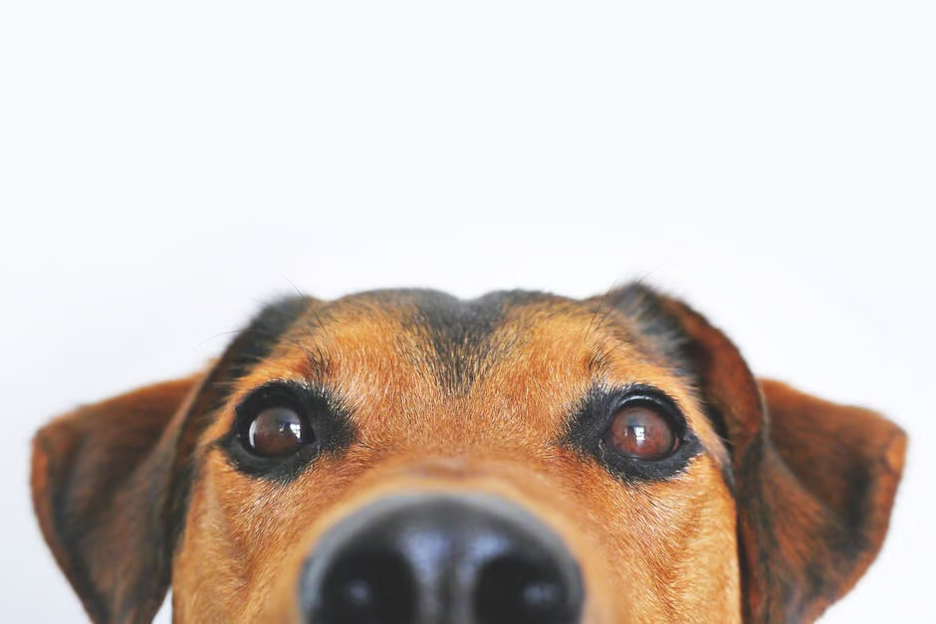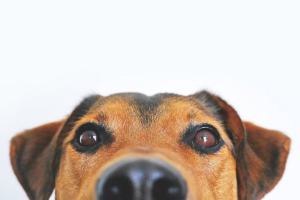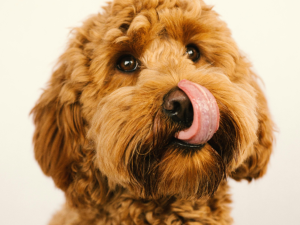
Tear stains on your beloved pup’s eyes can be more than just an aesthetic issue. These unsightly marks not only affect their appearance but might also point to underlying health concerns. Whether you’re a new pet owner or a seasoned dog lover, understanding how to effectively manage and prevent tear stains is crucial for your dog’s well-being. In this comprehensive guide, we’ll explore various remedies, tips, and insights to help keep your furry friend’s eyes clean and healthy.
Introduction to Tear Stains
What Causes Tear Stains?
Tear stains appear as reddish-brown streaks under a dog’s eyes, primarily due to excessive tearing. The stains are often more noticeable on dogs with light-colored fur. These marks are mostly caused by porphyrins, which are iron-containing molecules found in tears. When tears overflow onto the fur, these molecules oxidize, leading to discoloration.
Breeds Prone to Tear Stains
Certain breeds are more susceptible to tear stains due to their facial structure. Breeds like Maltese, Poodles, and Shih Tzus have shallow eye sockets that cause tears to spill onto their fur more easily. Flat-faced breeds such as Bulldogs and Pugs are also prone to tear staining because of their facial anatomy.
Why Tear Stains Matter
While tear stains might seem like a minor issue, they can indicate underlying problems. Persistent tear stains can signal eye infections, blocked tear ducts, or allergies. Addressing the root cause is essential for your dog’s overall health.
The Health Implications
Potential Health Issues
Ignoring tear stains can lead to more significant health problems. Chronic wetness under the eyes can create an ideal environment for bacterial and yeast infections. These infections can cause discomfort, redness, and irritation for your dog.
Eye Infections
Eye infections often accompany excessive tearing. Symptoms include redness, swelling, and a yellow or green discharge. If left untreated, these infections can worsen, leading to more severe complications.
Allergies and Irritants
Allergies can also contribute to tear stains. Common allergens include pollen, dust, and certain foods. Identifying and eliminating these allergens from your dog’s environment can reduce tear staining and improve their overall well-being.
Home Remedies
Apple Cider Vinegar
Apple cider vinegar is a popular home remedy for tear stains. Adding a teaspoon of apple cider vinegar to your dog’s water bowl can help change the pH of their tears, making them less likely to stain the fur. Ensure it’s well diluted to avoid any gastrointestinal upset.
Coconut Oil
Applying a thin layer of coconut oil around your dog’s eyes can create a barrier that prevents tears from staining their fur. Coconut oil also has antimicrobial properties, helping to keep the area clean and free from infections.
Chamomile Tea
Wiping your dog’s eyes with a cooled chamomile tea bag can help soothe irritation and reduce tear staining. Chamomile has anti-inflammatory properties that can calm the skin and reduce redness.
Grooming and Hygiene Tips
Regular Eye Cleaning
Regularly cleaning your dog’s eyes is crucial for preventing tear stains. Use a damp cloth or a pet-safe wipe to gently clean the area around their eyes. Make this a part of your daily grooming routine to keep tear stains at bay.
Trimming Fur Around the Eyes
Keeping the fur around your dog’s eyes trimmed can prevent tears from pooling and staining the fur. Use blunt-nosed scissors to carefully trim the hair, ensuring you don’t accidentally hurt your dog.
Using Tear Stain Remover Products
There are various tear stain remover products available on the market. These products are specially formulated to remove stains and prevent new ones from forming. Look for products with natural ingredients to avoid any potential side effects. Also, products like a tear stain cleaner for dogs can be easily found online. Not only are these products effective, but they are also safe and gentle for your dog’s delicate eye area.
Professional Solutions
If home remedies and grooming tips don’t seem to do the trick, it might be time to consult a veterinarian. They can help identify and address any underlying health issues that may be causing tear stains. They may also recommend professional tear stain removal solutions, such as antibiotics or topical ointments.
Diet and Nutrition
Importance of a Balanced Diet
A balanced diet plays a significant role in your dog’s overall health, including their eye health. Ensure your dog gets a diet rich in high-quality proteins, fats, and essential vitamins and minerals.
Omega-3 Fatty Acids
Omega-3 fatty acids, found in fish oil, can help reduce inflammation and improve skin health. Adding a fish oil supplement to your dog’s diet can promote healthier eyes and reduce tear staining.
Avoiding Allergens
Identifying and eliminating food allergens from your dog’s diet can significantly reduce tear staining. Common allergens include beef, chicken, dairy, and grains. Switching to a hypoallergenic diet might be beneficial if you suspect food allergies.
When to Seek Professional Help
Persistent Tear Stains
If home remedies and grooming practices don’t seem to reduce tear stains, it might be time to consult a veterinarian. Persistent tear stains can indicate more serious underlying health issues.
Signs of Infection
If you notice signs of infection, such as redness, swelling, or discharge, seek veterinary attention immediately. Early intervention can prevent the condition from worsening and ensure your dog’s comfort.
Comprehensive Health Check
A comprehensive health check can help identify any underlying issues contributing to tear stains. Your vet can perform tests to check for eye infections, allergies, or other health problems that might be causing excessive tearing.

In the end, managing and preventing tear stains is crucial for maintaining your dog’s eye health and overall well-being. Understanding the causes, implementing effective home remedies, maintaining proper grooming and hygiene, and ensuring a balanced diet can keep your dog’s eyes free from unsightly marks. Remember, if tear stains persist or if you notice signs of infection, it’s essential to seek professional help.
By following these tips and being proactive about your dog’s eye care, you’ll not only enhance their appearance but also contribute to their long-term health and happiness. If you need further guidance, consider booking a consultation with a veterinarian to discuss the best approach for your furry friend. Here’s to bright, clear eyes and a happy, healthy pup!



